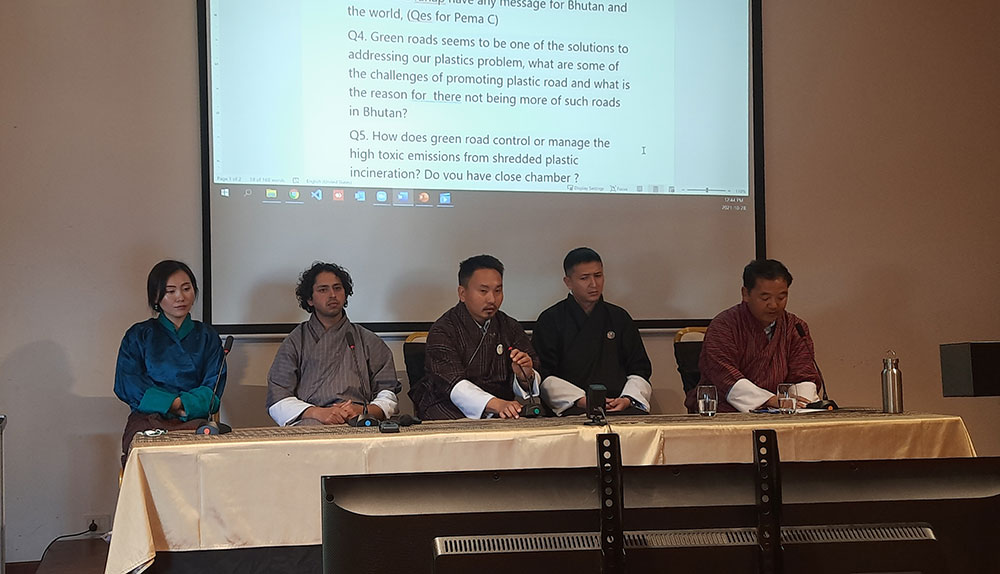Chhimi Dema
In the highlands along the Jomolhari trek route, there is loss of alpine meadow and growth of algae in the lakes, weather patterns are changing and cordyceps yields are dwindling.
All of these changes are attributed to global warming.
Presented during the fifth series ‘Witness to Warming’ of a climate series talk on October 28, these were observations recorded by a team of officials who trekked to Jomolhari from October 15 to October 21.
The team comprised of officials from the Association of Bhutanese Tour Operators, the Bhutan Ecological Society, the Guide Association of Bhutan, Jigme Dorji Wangchuck National Park, and the Tourism Council of Bhutan (TCB) trekked to make observations and assessments of possible climate signals along the Jomolhari trek route and nearby areas.
TCB’s deputy chief research officer, Phuntsho Gyeltshen, said: “Natural gorges and erosions are expected to form when the snow melts at a faster rate, and when, instead of ice water, snow blocks are released.”
The loss of alpine regions due to encroachment by shrubs and trees from the warmer areas is another observation, he said. This leads to loss of pasture lands, causing a shortage of grassland and fodder for the animals.
A key observation is the late arrival of spring and rapid transition into summer, followed by a long fall and late onset of winter months, the official said.
The team also saw the growth of algae or aquatic plants in the lake that was not seen a decade ago.
Phuntsho Gyeltshen said, “This again could be due to the rising temperature creating favourable conditions for the algae to grow.”
The team noted that the cordyceps yield is decreasing every year.
Phuntsho Gyeltshen said that drier conditions do not provide a hospitable environment for the fungus growth.
The team noted dead trees on the mountains, movement of low-elevation bird species to higher areas, bugs and insects similar to armyworm in Thangthangka, and chillies growing in Shana areas.
The team also noted that poor waste management is a major concern in the area.
During the talk, Pema Choden of Yee Getaway, said that Thorthormi was melting at an accelerated rate.
She said that, as explained by glaciologist Toeb Karma with NHCM when he was travelling from Luggye Tsho to Lunana in 2002, it was easy to walk on Thorthromi.
“Due to the hydrostatic pressure of Thorthromi, it can push into Raphtsteng and cause a glacial lake outburst flood,” she said.
Although there are early warning systems, communities like Thanza and Toenchey would get barely 20 minutes of evacuation time, she added.
Arun Bhattarai, an independent filmmaker, who trekked to Lunana, spoke about his documentary “Snow Lion and the Glaciologist”.
He said that the documentary highlighted people who are risking their lives every year to measure the glaciers.
Rikesh Gurung, the founder of Green Roads, also presented on reusing plastic in roads to address waste management.
He said that his company blacktopped 109km of roads using 600 tonnes of plastic.
The climate series is organised by the National Environment Commission, UNDP, the Bhutan Foundation, the Royal University of Bhutan, WWF, and the Bhutan Ecological Society.


